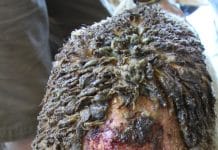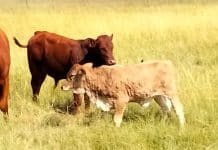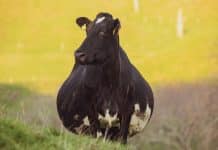Estimated reading time: 4 minutes
This article provides a brief overview of a very important but complex subject. The aim is to give the ruminant producer a broad framework for decision-making to optimise management.
Several minerals are required for the normal functioning of essentially all metabolic processes in ruminants. Dietary deficiencies or excesses of certain minerals can result in substantial economic losses in animal productivity. A sufficient supply of minerals is essential to optimise milk production, growth, fertility, health and immunity of ruminants.
Macro- and microminerals
In animals, seven elements, namely calcium (Ca), phosphorus (P), magnesium (Mg), potassium (K), sodium (Na), chlorine (Cl) and sulphur (S), must be present in the diet in fairly large amounts (grams to tens of grams per day) and are termed essential macrominerals.
Other elements, termed essential microminerals or trace minerals, are required in much smaller amounts (milligrams to micrograms per day). These include iron (Fe), copper (Cu), zinc (Zn), manganese (Mn), cobalt (Co), selenium (Se), iodine (I) and molybdenum (Mo).
Keep in mind, though, that the higher the production and reproductive status of an animal, the more of these essential minerals are required to optimise the increasingly harder working metabolic processes. For example, an average weight dairy cow needs approximately 51g of Ca to produce 9kg of milk, compared to 162g of Ca to produce 41kg of milk. Lactation is hard work, but so is growth. A 30kg growing lamb in the feedlot needs around 24mg of Zn per day to gain 200g in weight, compared to 40mg of Zn to gain 400g.
Role of soil conditions
Soil is the main source of minerals for most life forms. Animals mostly get access to minerals by ingesting plant material containing the minerals the plants had to absorb for their metabolic processes to function. For the animal to be able to utilise the minerals in the plants, the plant material must be digested, absorbed through the gut wall and delivered into the bloodstream to be metabolised. This may seem simple, but is in fact a complex process.
Soil sustains life by providing water and nutrients to microbes, plants, animals and other living organisms. Yet balance is the key to soil health. The presence of various organic and inorganic (e.g. minerals) chemicals is essential for healthy soil. Deficiencies, excesses, or improper ratios in some cases can result in poor soil conditions and may be toxic to the various organisms that live in and off the soil. Mineral concentrations in forages therefore predominantly depend on factors such as soil fertility, pH, season, climate, irrigation water and atmospheric inputs.
Acidic soil types (pH < 6,0) may, for example, limit absorption of phosphorus, potassium, sulphur, calcium, magnesium and selenium by the plant. The low pH may, however, increase the absorption of iron, manganese, boron, copper and zinc. Soil derived from young and alkaline geological formations are more abundant in most trace minerals than older, more acidic, course, sandy formations. There are also leaching and weathering of soil in regions marked by heavy rainfall and high temperatures, causing deficiencies in plant minerals.
Climatic effects are associated with soil pH, leaching, adapted forage species and maturity. Tropical areas normally have acidic soil and faster maturing, lower quality forages than other regions. The timing of the season of growth may affect mineral content by its relation to the maturity stage and growth rate of forages, as well as water availability. Irrigation with brackish water can have detrimental effects on soil texture and health, while the use of sewage water can increase the concentration of several minerals including copper, manganese
and iron.
How are ruminants affected?
The consequence of these soil-related issues is that more than 50% of fibrous by-products listed by National Research Council publications (the ‘Bible’ for animal nutritionists) are deficient in Ca, P, Na, Mg, S, Co, Cu, Mn and Zn for ruminants. Most of these mineral deficiencies are severe and several deficiencies can be present in the same forage.
Plants also do not reflect the available mineral profile of soil. They mostly absorb the minerals they need, which is not the same as the requirements of animals. In plants the leaves are generally richer in all minerals than the more fibrous stems. As forage maturity increases, mineral content therefore declines. In contrast, however, the percentage absorbable Cu and Mg in fresh grasses is lower than that of hay or ensiled grasses.
To make matters worse, not all the minerals in forage are available for the animal to absorb. Look at manure – the undigested fibre in manure contains bound minerals that could not be absorbed by the animal. Interactions among minerals during the digestive and absorption process in the gut may also greatly modify their availability.
Optimise supplementation
A basic conclusion is that plant mineral content does not mirror soil mineral content. Most forages are deficient in minerals and the availability of minerals in forages for the animal varies immensely. Minerals from forages thus cannot provide in the needs of high producing animal. To fulfil the everincreasing genetic production and reproductive potential of ruminants, every metabolic process must function optimally. To achieve this, forages and feed must be supplemented with minerals throughout.
Clearly mineral nutrition is a very complex branch of animal nutrition that mostly does not get all the attention it deserves. Make use of animal nutritionists to help optimise mineral supplementation for your animals and strategically monitor the situation by performing liver and blood mineral analyses. – Sjoerd ten Cate (Pr.Sci.Nat.), Feedtek
For more information, send an email to Sjoerd ten Cate at sjoerd@feedtek.co.za.







